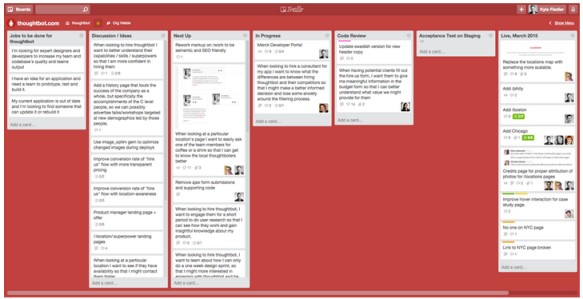Please raise your hand if you've ever felt frustrated with the endless to do list. When you are at the beginning of your startup journey, you're hit with the never ending priority list, killing any motivation and drive. They say, focus. You think, it's challenging enough to get stuff done – never mind finding the time to put together a structure to help you grow your startup faster.
Well, there's good news: Getting stuff done doesn't have to be that frustrating. With the right process and guidance, you could easily create an actionable plan -- all without spending hours searching for productivity tips and growth hacks on google.
With this blog post we’ll walk you through the step-by-step process of setting up your startup priorities for growth. When we're done you'll know exactly what to do to get focused on hitting your milestones and growing you startup in less time. Ready? Let's dive in.
5 Steps for Setting Up Your Startup Marketing Priorities
1. Research your target audience:
Before you start diving into any startup growth hacks, you need to understand your customer. Just like you would research the background of your potential investor before going to the meeting, you want to establish the three or four main takeaways about your target audience, and create your target customer description.
Get started with a simple question: Who is my ideal customer? Where does he or she live? What do they do for a living? What is the pain point that they have?
Get some inspiration from Groove. They have spent 100 hours (!) to understand their customers.

Image Credit: Groove
2. Build a website that explains the benefits of your product:
After you've came up with a picture of your target customer, figure out how you’re going to communicate your findings on your website. Make a list of the core product features and try rephrasing them and making them sound more like benefits.
Ask yourself a question: What is the value that my product brings to my customer?
And hey, if accounting startups can sound human, you can too! Here’s a great example of how FreshBooks focuses on the benefits rather than the product features and communicates their value proposition on their website:

Image Credit: FreshBooks
3. Create content for your audience:
When you know who your target customer is, and have a website that clearly speaks the benefits to your audience, then the next step is to get customers in, right? Get started with setting up a blog to attract your audience. Think of this step like you did at step #2 — what’s the value of the content you create to your customer?
Content is like a glue between your target audience and your product that builds trust and brings a long term value. Did you know that even
investors encourage startups to get started with blogging?
Check out the story behind Vero, an email marketing startup, who uses blogging for startup growth.
 Image Credit: Vero
Image Credit: Vero
4. Find the tools to measure your performance:
Then, when you have a website up, and content that talks about the needs of your customer, find the tools to help you understand if you’re on the right track. Marketing is a process where every step is measured and improved overtime, and tools will depend on the challenges you have at this moment and the goals you want to hit in the long run.
What is the one metric that matters to your startup today? What is your next milestone?
Use the famous AARRR framework from Dave McClure to get an idea of the five stages of customer acquisition for startups. When you know what you need to focus on today, then you can find the tools to measure your performance:
5. Make an action plan:
Last, but certainly not least, you want to make a clear action plan on what’s next to be done. This way, you will get into an automated mode of hitting your tasks and milestones without a worry. Trello is one of the most popular task management tools, widely used for product development as well as startup marketing. What was helpful for me when starting out with Tactic, was writing down all the things that need to be done, then grouping them by theme and prioritising against milestones. I’ve started with an agile Trello board similar to this one:

Image Credit: Thoughtbot.com
What’s your startup growth process? What helped you get stuff done when starting out? I’d love to hear it!
Not sure how to move the needle for your startup? Then, subscribe for Tactic updates and find out when we launch our bite-sized courses on digital marketing by clicking here.
 Ruta Danyte is the founder of Tactic, an online learning platform for busy entrepreneurs. As a digital marketer and a neuro-linguistic programming trainer, Ruta is on a mission to provide the step-by-step guidance and tools that help entrepreneurs grow startups faster and find customer for their products in less time. Follow her on Twitter or connect on LinkedIn.
Ruta Danyte is the founder of Tactic, an online learning platform for busy entrepreneurs. As a digital marketer and a neuro-linguistic programming trainer, Ruta is on a mission to provide the step-by-step guidance and tools that help entrepreneurs grow startups faster and find customer for their products in less time. Follow her on Twitter or connect on LinkedIn.